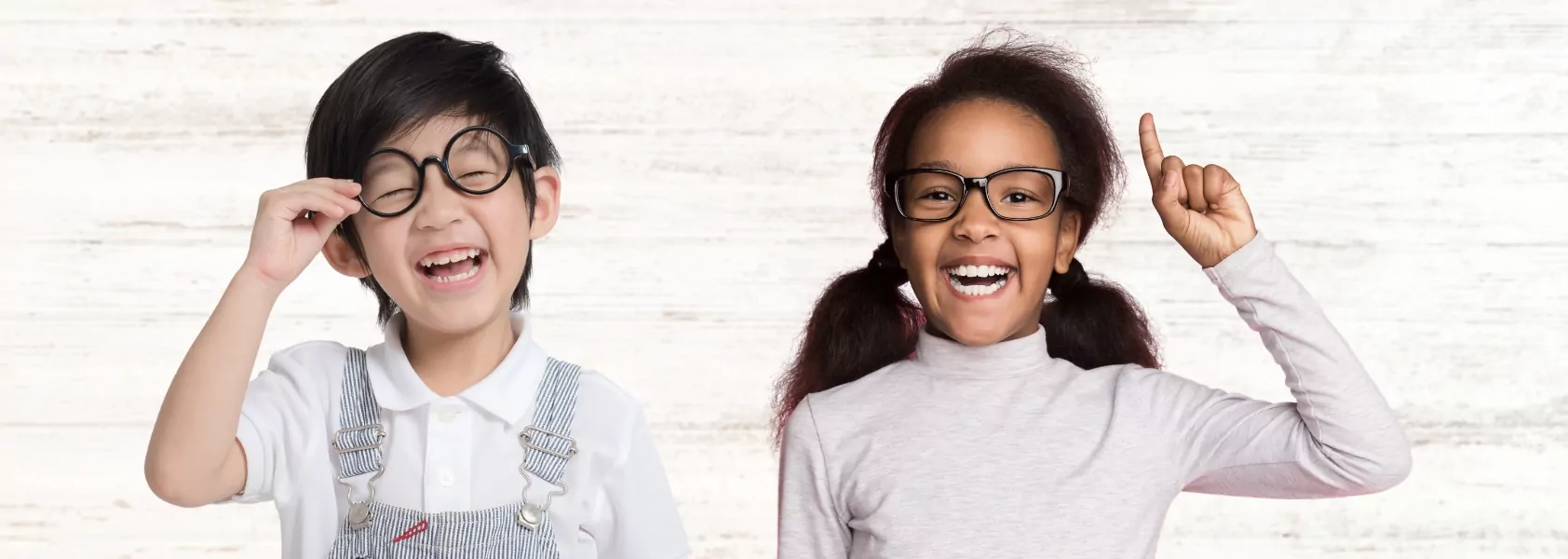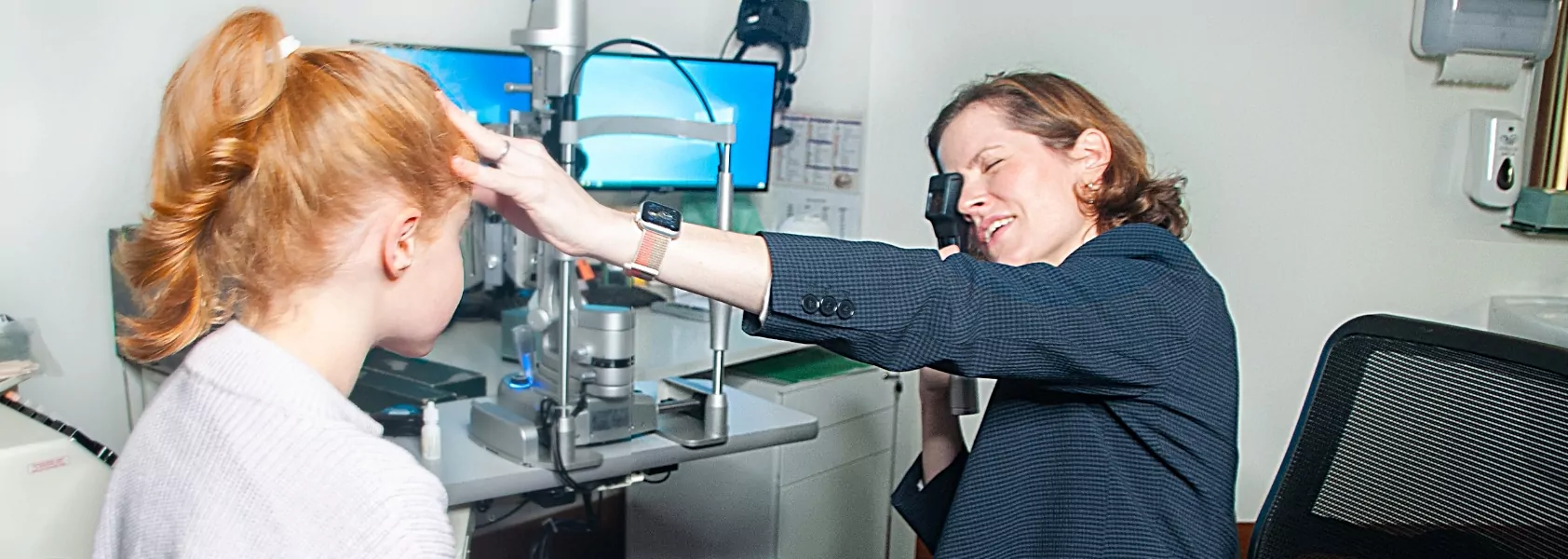Does your child or infant need glasses?
Children are visual learners – up to 80% of learning relies on vision – so it’s crucial to deal with eye problems promptly. In some cases, early treatment can limit or prevent long-term problems and reduce the need for further treatment. If your child or infant has focus problems, amblyopia (lazy eye), eye muscle issues or another condition that impacts vision, they may need glasses.

Signs and symptoms
Signs of visual issues can be difficult to identify, particularly in babies and younger children.
Signs may include:
- Squinting
- One eye wandering
- Poor depth perception
- Clumsiness
- Headaches
- Rubbing
- Shutting one eye when reading
- Poor concentration
- Abnormal results in vision tests

Eye conditions that may require glasses:
Myopia (near sightedness)
Children with myopia have a focus point in front of the retina, causing blurred or unfocused distance vision.
Hyperopia (farsightedness)
Light rays entering the eye focus behind the retina. The eye has to exert extra focusing power to see clearly at a distance and even more so up close. If the hyperopia is significant, then the eye may not be able to focus the near image clearly. Many young children have mild hyperopia, which usually resolves naturally as they grow.
Astigmatism
Light rays entering the eye focus on different places. Astigmatism is caused by an irregular eye surface or mismatched lens curves inside the eye. The imperfection causes blurred vision for distance and near sight but is usually treatable.
Anisometropia
Each eye has a different focus, making it difficult for the eyes to work together. In some cases, the eye with poorer vision can become ‘lazy’ as the other eye compensates. Glasses are prescribed to treat this condition and even out the differences in focus.
Refractive esotropia
The focusing muscle and the muscles drawing the eyes together are linked when looking at a close object. Some children with hyperopia need to exert so much focusing power that their eyes turn in. This condition, known as refractive esotropia, can be fully correctable with glasses.
Amblyopia
Also known as lazy eye, amblyopia is the leading cause of vision issues among children – usually developing between birth and age seven. When one eye has reduced vision, it wanders inward or outward.

How are young children tested for glasses?
A retinoscope shines a light into the eye, helping the ophthalmologist identify characteristics that signify hyperopia, myopia or astigmatism. Then, lenses of varying strengths are placed in front of the eye until the refractive (focusing) error is eliminated.
Depending on the condition, your child may also need to look at letters or images to determine the extent of visual impairment.
In young children, it may be necessary to dilate the pupil and relax the focusing muscle with eye drops to get an accurate diagnosis. The eye drops cause blurred vision and light sensitivity for several hours following the appointment.
Understanding prescriptions
- Each eye is given a prescription. Then, an optometrist or optician prepares the lenses.
- Level of correction. The higher the first number on the prescription, the greater the correction required in the lens. A second number means there is some astigmatism, and the higher the number, the greater astigmatism.
- Far or near sighted. A plus sign in front of the first number indicates a hyperopic (farsighted) prescription, while a minus sign indicates a myopic (near-sighted) prescription.










